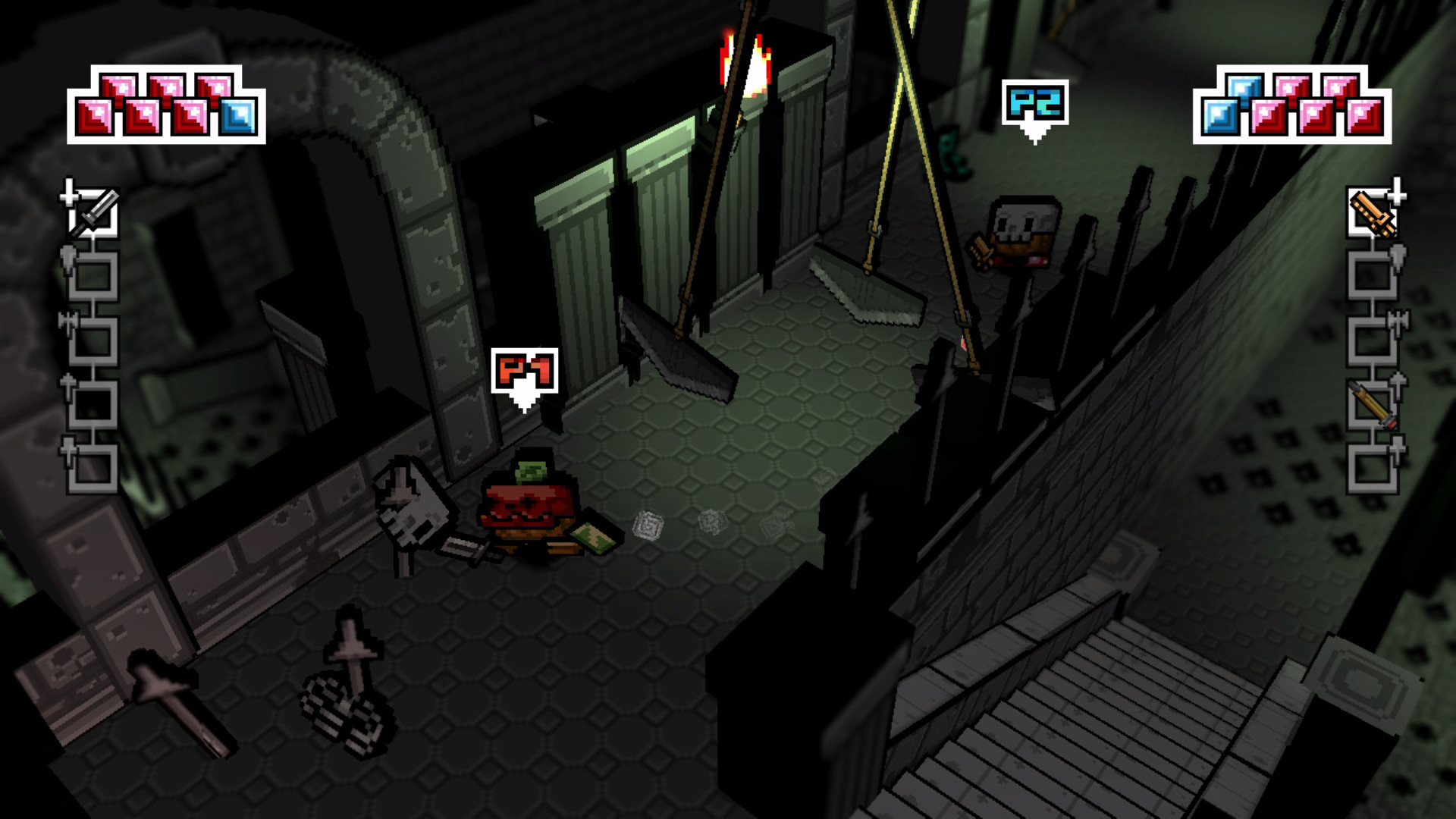Over a year ago, Umaiki Games and Fabraz released a charming but fairly unpolished Zelda-style action-adventure called Skellboy on Switch and Steam. Now the game has been re-released after extensive reworking as Skellboy Refractured. The new version adds an extra dungeon, more boss fights, performance improvements, and most importantly, 2-player local co-op. Are those improvements enough to mend all of Skellboy’s broken bones, though?
Skellboy Refractured takes place in the kingdom of Cubold, where everyone is made of boxes and cubes. One day, the kindly but naïve king’s court magician, Squarumon, disrupts life for everyone when he casts a spell to raise the dead and other monstrosities. Squarumon has inadvertently resurrected an ancient hero, though – Skippy, AKA Skellboy! Now our hero (and a duplicate in 2-player co-op) must rescue the king, find the missing princess, and stop the evil wizard once and for all.
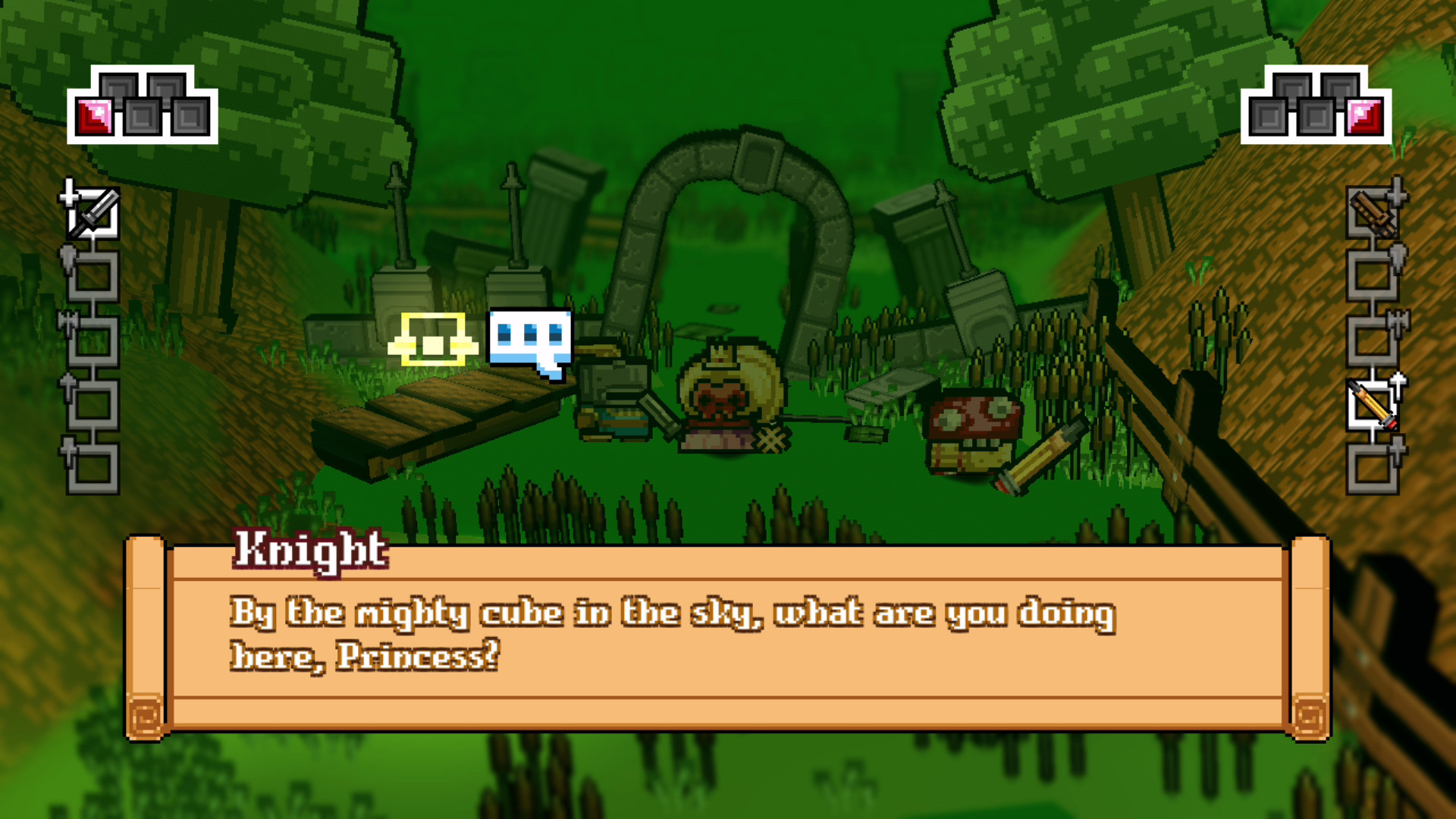
The intro, in which the bits hit the fan, is part of this action-adventure game’s strongest element: presentation. Skellboy’s graphics utilize a unique blend of 2D sprites and 3D environments to extremely pleasing effect. It sort of recalls the style of Treasure’s beat ‘em up-RPG Guardian Heroes, though with deliberately boxy characters and a much more active 3D camera. The catchy chiptune soundtrack from Bjoern suits the visuals quite well, even if certain songs become repetitive after a while.
Although Skellboy Refractured is mostly a traditional Zelda-style game, the hero’s skeletal nature here certainly gives the gameplay a unique flavor. Skippy’s head, torso, and legs can be swapped out with parts dropped by enemies or found throughout the environment. Each piece has an amusing little description and can affect the hero’s stats in varying ways. It’s probably wisest to prioritize parts that increase Skippy’s health, which will surely have the side effect of creating silly mismatched looks.
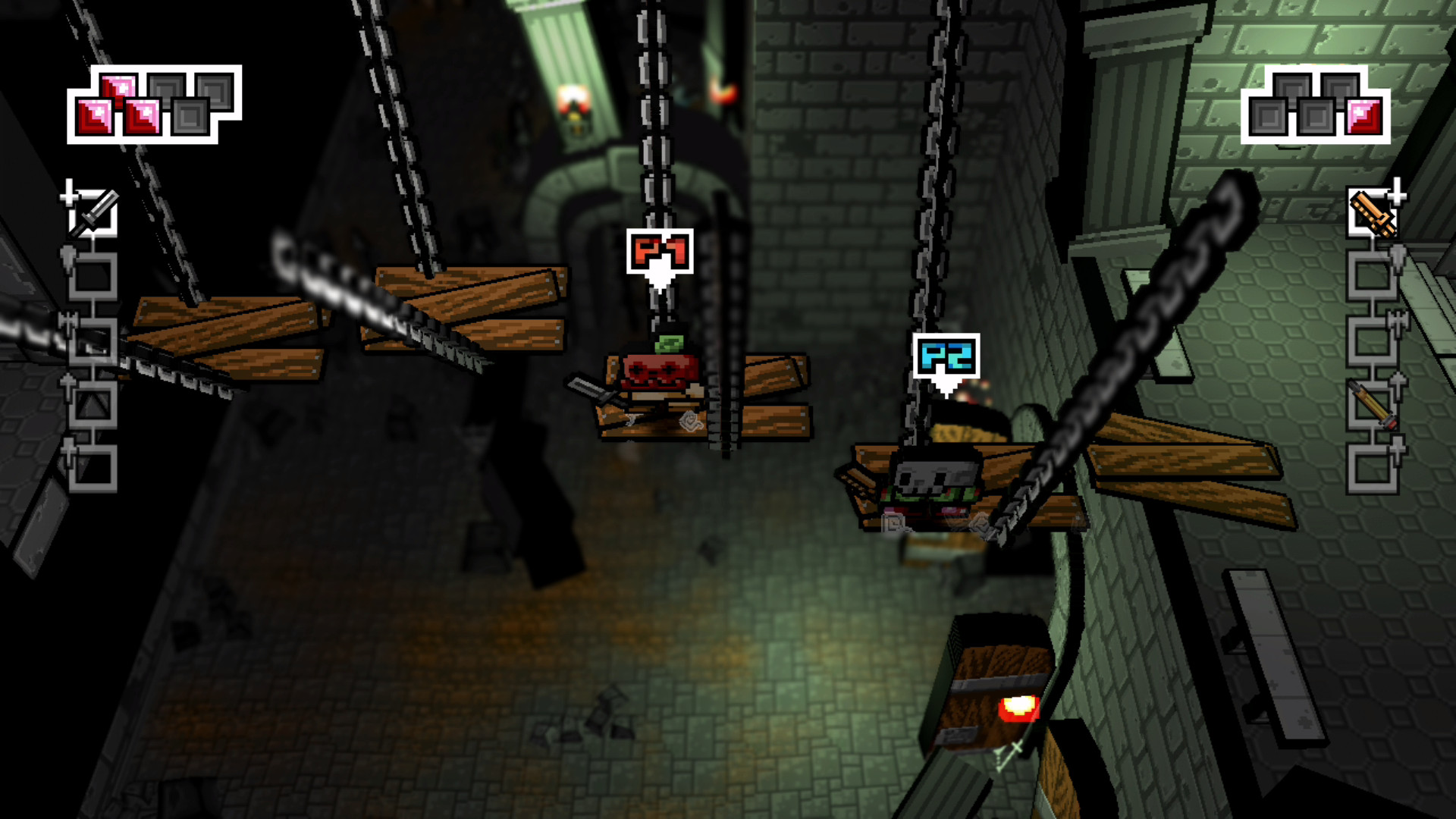
The game really does interesting things with swappable parts at times. The hero can equip a bomb for his head to blow up walls, leaving him headless afterward. One monster, the medusa head, even takes over as Skellboy’s head, reversing the player’s controls, until poor Skellboy can find a new one. Medusas will get on your nerves, but they’re a clever foe indeed.
Skippy mostly fights with swords and axes, though he can fire ballistas found in the environment or wield certain projectile weapons as well. Combat is, unfortunately, the most frustrating aspect of Skellboy. The hero’s weapons have different arcs and properties, but they all swing too slowly and leave players open to damage too often. Sometimes the game has the audacity to force the player to fight a big batch of enemies in a row within a confined area, and it’s just too hard to avoid damage because of the clunky combat. Players can kick the difficulty down via “Relax Mode,” but that doesn’t make the combat any more fluid.
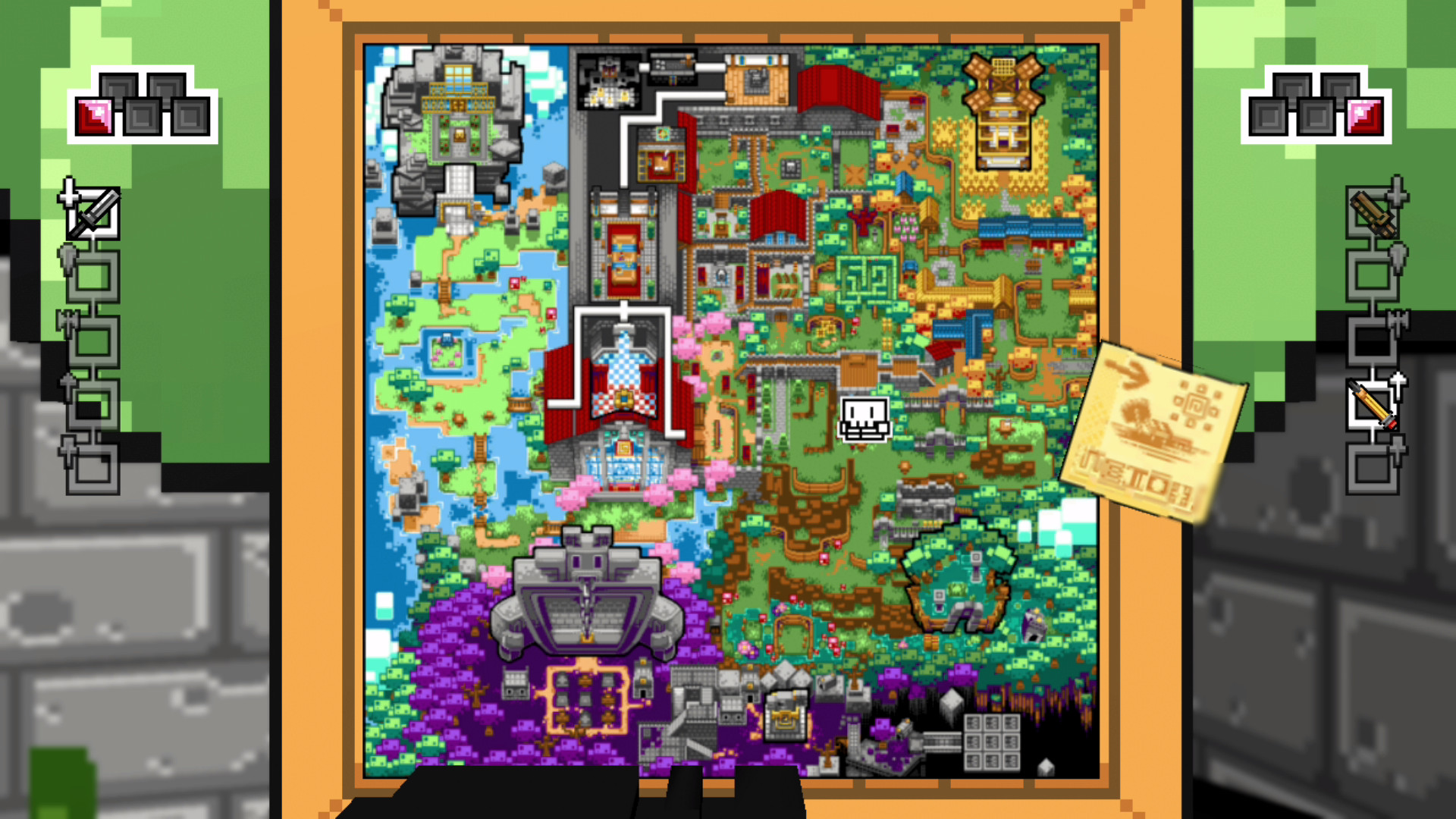
Players won't see this map often.
Navigation is also a sticking point in Skellboy Refractured. First off, Skippy walks too slowly, making backtracking a real pain. Worse, you can’t just access a map at any time like in most games of this type. Instead, players only get to glance at an overworld map at certain sporadic locations. The vast majority of the time, you’re stuck without navigational guidance, making it easy to get lost in dungeons and the like. The 3D camera doesn’t help, either. While it certainly produces cool cinematic effects here and there, it also tends to obscure objectives and make paths harder to see. Sticking to a more fixed A Link to the Past-like viewpoint while outside of cutscenes would be far more intuitive.

The “Refractured” version of Skellboy adds a new Refractured Campaign (the equivalent of the Master Quest in Zelda), a randomized Submarine dungeon, lots of new boss fights and items, and drop-in, drop-out 2-player local co-op. To add a second player, simply press the menu button at any time and then select Multiplayer. A duplicate Skellboy with a different mix of body parts will join the fray.
Co-op certainly makes the game easier at times, even if items and health cubes are not shared among players. It’s not just the second sword during boss fights and lengthy battles, it’s also the ability for a downed player to respawn without getting sent back to a checkpoint. Downed players turn into ghosts, a state in which they can fly around but not interact with anything. After a respawn timer counts down, the deceased player comes back to life. As long as one player can stay alive when the going gets tough, the team has a much better chance of surviving than a solo player would.
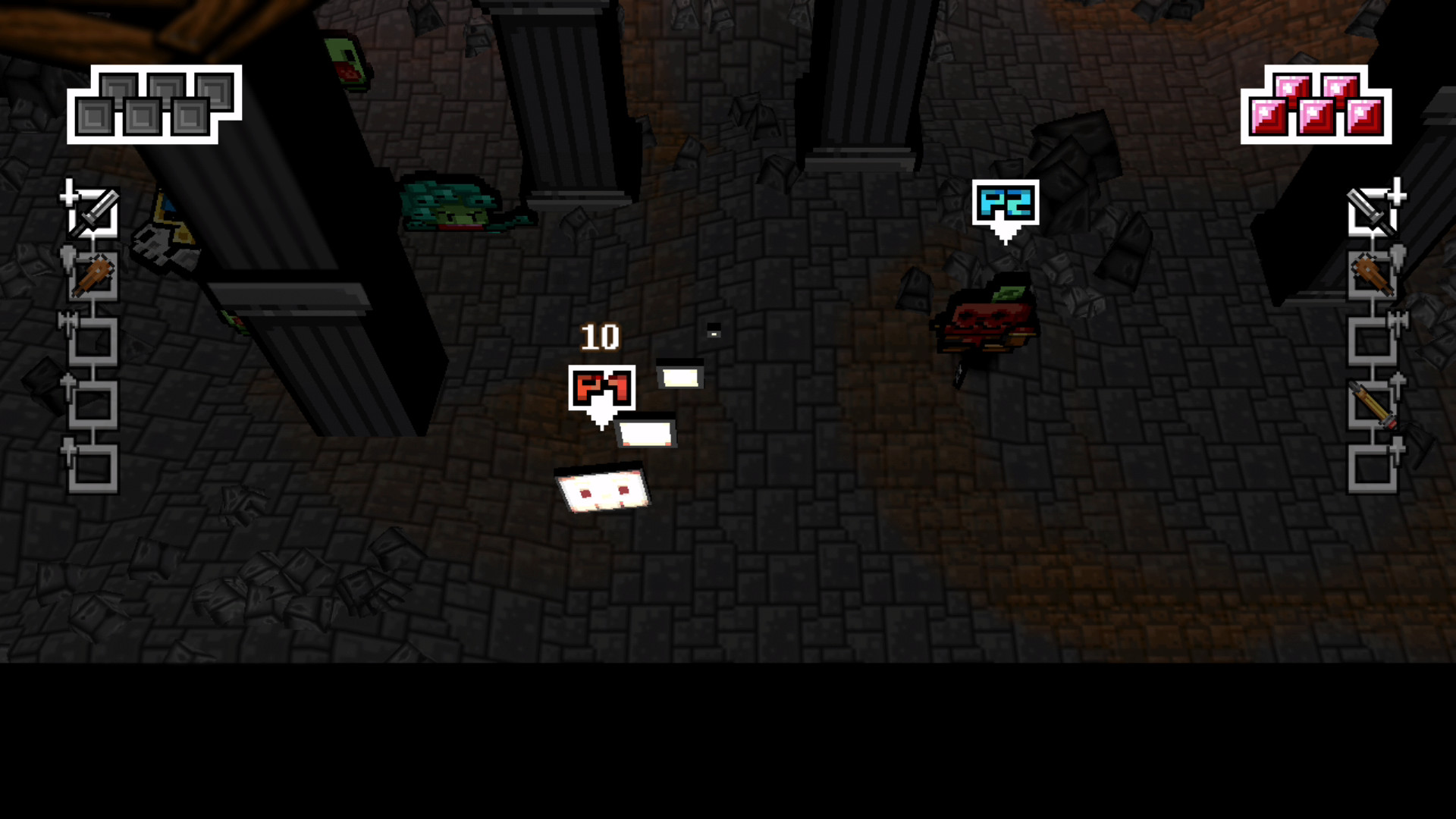
The only drawback to cooperative play is the second player can just wander off the screen or get left behind by the camera when the primary player moves around. If the second player disappears for long enough, he or she will respawn next to the main Skellboy. Admittedly, that prevents the team from getting stuck in situations where platforming is necessary and one partner can’t handle the jumps. It’s generally not fun getting left behind, though, so locking the second player onto the screen or adding split-screen might have worked better.
It’s a shame the “Refractured” update still left Skellboy with a lot of rough edges like slow movement, clunky combat, and no proper map. However, 2-player local co-op is a standout addition of its own. Cooperative Zelda-style games are extremely few and far between, and Skellboy Refractured is one of those rare games. While this title is a tough solo recommendation, there’s enough co-op meat on its bones for any Zelda-loving couple to have a good time.
A Nintendo Switch download code was provided by the publisher for review.
Verdict
Co-Op Score
Overall
The Co-Op Experience: A local second player can join in as a duplicate Skellboy. A defeated player will respawn after a set time if the other player remains alive during battle.
Co-Optimus game reviews focus on the cooperative experience of a game, our final score graphic represents this experience along with an average score for the game overall. For an explanation of our scores please check our Review Score Explanation Guide.
